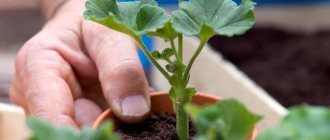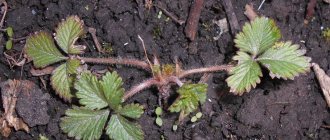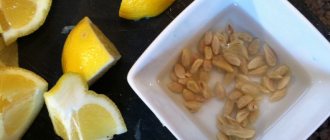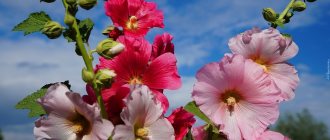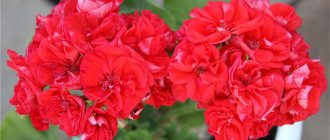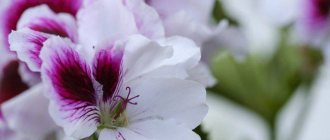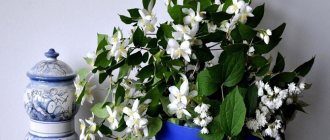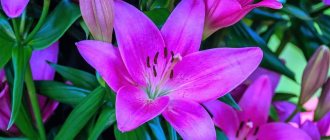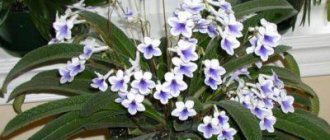Pelargonium is a perennial herbaceous plant. The name of the family remains the same: Geraniaceae. Although over time, botanists identified the genus “Pelargonium” separately.
It is almost impossible to identify common features for a family that has five genera and hundreds of species. There are herbaceous, creeping, straight, branched varieties, and there are shrubs. Flowers vary in shape and size, but are most often collected in umbrellas. Leaves are regular, palmate or dissected. The fruit is a capsule with sepals.
Thanks to its southern origin, pelargonium easily tolerates sun, heat and dryness. But she is not ready to winter in open ground.
These are noticeable spreading plants, growing up to 50 cm.
They delight gardeners with large (up to 7 cm in diameter, or even larger) flowers of various colors, both plain (albeit with dark stripes or spots running along the veins) and variegated. Often they also have corrugated or wavy edges of the petals (the so-called double flowers).
The leaves of these flowers resemble maple leaves, but smaller and more “toothed.”
If other geraniums (say, zonal) can bloom all year without ceasing, then Her Majesty deigns to bloom for only 3-4 months. And even then, if the flower is not given winter rest, the flowers may not wait.
The best varieties of royal pelargoniums
There are a lot of them these days—more than one hundred. Therefore, you can consider this list of the best as my IMHO... But in our store they are the most popular ones. Looking at the photo, it’s not hard to guess why!
Ann Hoystead. Medium-high variety (grows up to 40 cm). It is distinguished by red-burgundy petals with a deep dark middle part and a light edge.
Askham Fringed Aztec. An even shorter (up to 30 cm) variety that has white flowers with “cut” petals at the tips and pink patterns in the center.
Black Prince. A variety with deep burgundy flowers, each petal of which is bordered by a contrasting light stripe. Grows up to 40 cm.
Bushfire. It has scarlet flowers, in the depths of which there are dark spots. The height of the bushes is up to half a meter.
Carisbrooke. A relatively tall (up to 45 cm) variety with pink flowers. Terry petals are decorated with crimson stripes and strokes.
Georgina Blythe. Another red variety, this time low-growing (no higher than 35 cm). The center of the flowers is white, the petals are slightly terry.
Joy. Joy differs from the previous variety in that it has a greenish rather than white center and the absence of dark spots and veins. It also has slightly double, red petals (but no longer with orange, but rather with a pinkish tint). The bushes of the variety are tall - up to 45 cm, but the flowers are small - a maximum of 4.5 cm in diameter.
Lavender Grand Slam. Terry pink variety with burgundy centers. It grows up to 40 cm, standard for royal pelargonium.
Lord Bute. The variety is somewhat reminiscent of Black Prince, but its flowers are even darker - deep wine color, edged with a dark pink stripe. The bush has a height of 45 cm. This variety cannot be called terry, but still the petals are slightly curved at the edges.
Margaret Stoley. This is one of the most variegated varieties. The red petals have spots, veins, and borders - in addition, their shape is also terry. The advantage of Margaret Stoli is that despite the very compact size of the bush (it grows up to 30 cm), it is decorated with relatively large flowers - their diameter reaches 6 cm.
Morwenna. This is the darkest of the varieties presented in this “top”. Morwenna's petals are burgundy, iridescent almost black, and are also wavy along the edges. And, although the bush of this variety is small, its flowers are very large.
Rimfire. These wavy flowers seem to bring together all the shades of red. In addition, they are also quite large.
White Glory. Tall (45 cm) bushes are decorated with “fluffy” white flowers. They are also giants among pelargoniums - they reach 7.5 cm in diameter.
The varieties Candy Flowers or Candy Flowers (originally Candy Flowers) deserve special attention. They are decorated with two-color flowers with characteristic spots that do not appear on every petal.
In this “series” there are several varieties, the names of which reflect the main shade of the petals:
- Candy Flowers Bicolor (pink flowers, as in the photo above),
- Bright Red (cherry flowers with black spots on the petals),
- Dark Red (velvety dark red flowers with almost black spots - interestingly, the reverse side of the flowers has a lighter shade).
Important! Almost all varietal pelargonium flowers of “royal blood” do not have that characteristic aroma that not everyone can stand (that is, simply unpleasant). Therefore, they can be safely placed in the living room and even the bedroom.
Pelargonium Edwards Pleasure
Plants with this shipping deadline are sent out from April 1 to May 30 in the order in which orders are received.
Plants with only one delivery date !
For all planting material
Dozens of payment methods
Fast and convenient delivery
Russian Post (Moscow and region within 24 hours), SDEK, Courier
Pelargonium Edwards Pleasure (Edwards Pleasure).
Dwarf zonal pelargonium. The bush is stocky and branches well. The inflorescences are double, large, warm salmon-colored with light tints.
Planting pelargonium: Even a novice gardener can plant pelargonium in the garden - the process does not require compliance with any complex rules. You just need to remember about the long roots of the plant when digging holes about 20 cm deep. When planting, it is better to leave a distance of 20-30 cm between the bushes.
Caring for pelargonium: Pelargonium requires systematic moderate watering: the soil should not be allowed to dry out or there should be a large amount of moisture in the soil. The flower does not need spraying. Garden varieties of pelargonium do well in partial shade; flowering is weak in direct sunlight. Therefore, on particularly hot days, darkening is required. The optimal air temperature for garden plants is no more than +20 °C.
Soil for planting: Pelargonium Edwards Pleasure (Edwards Pleasure) is quite demanding on the soil. The ideal solution is unused, loose soil with good drainage. For young plants without a formed root system, light soil is more suitable, so sand and peat, vermiculite and perlite are added to the composition. The soil for planting must be sufficiently fertile and well-drained. Pelargonium should not be planted in loamy and clayey soils.
Preparing for winter: Already in the fall, the pot with the plant is placed in a cool and dimly lit place. A southern or northern window sill in a house/apartment is quite suitable for this, since there is diffused sunlight there. And to make up for the lack of light at this time, you can use fluorescent lamps. The optimal daylight hours are 12 hours.
Planting location: The ideal location in the garden for Edwards Pleasure pelargonium will be in sunny areas. However, even in partial shade it is able to fully develop and bloom profusely throughout the season.
Reproduction of pelargonium by cuttings: You need to prepare a sharp knife or scalpel and disinfect it with alcohol. In no case should you use a blunt instrument, as this can damage the tissue of the cuttings and slow down the growth of future roots. Cuttings are cut from shoots directed at right angles to the main one, and at least 3 leaves should grow on them. For tall varieties of geranium, the length of the cuttings should be about 5-7 cm, for short and miniature varieties - 2.5-4 cm. The cut is made at right angles to the stem.
The Gardens of Eden online store will help make your dreams of creating the perfect garden come true. We will be useful for professional and novice gardeners, for collectors of rare varieties, for landscape designers, for communities of joint purchases. We work directly with the largest and most time-tested manufacturers of planting material, from all over Europe and Russia. And we offer for sale without intermediaries seedlings of ornamental perennial plants, shrubs, trees, conifers, as well as fruit and berry and bulbous plants. We also have our own production of perennial plants, which we grow for you with love and care. All plants are adapted to the Russian climate. Our assortment includes thousands of different varieties, as well as exclusives and new items. We carefully select only the best offers, eliminating unscrupulous manufacturers with possible mis-grading. Carefully designed packaging allows plants to be delivered in excellent condition even to the far corners of the country. We love our customers, therefore we take a very responsible approach to the issue of the quality of planting material, and are also responsible for the work of the Russian Post and transport companies.
Quality guarantee For the entire range
What kind of home care is required for Pelargonium Angel?
Geranium Angel is an unpretentious plant. However, there are some features in care that should be taken into account.
Illumination and temperature conditions
Astilbe - what to plant next to
The flower loves light, but grows well in places where there is not sun all day. In a sunny place it grows quickly, the crown becomes denser.
The Angel variety does not tolerate temperatures below 8 °C. In spring and summer, the pots are taken out into the fresh air, but make sure that there is not a big difference between the degrees day and night
It is especially important to observe the temperature regime during flowering.
Note! The plant should overwinter in cool conditions to improve the process of bud formation.
Flowers resemble pansies
Watering rules and humidity
Pelargonium of this type does not like strong humidity. The plant should be watered with warm and soft water, but the soil should not be constantly wet. In summer, more abundant irrigation is carried out; in winter, watering is reduced.
Spraying is not important for pelargonium; it easily tolerates drought and room air.
Fertilizing and soil quality
For the plant, it is better to choose a special soil for pelargoniums or geraniums. If necessary, you can mix the soil mixture yourself by taking peat, turf and a small amount of sand.
Important! Before planting, the soil is calcined in the oven to destroy harmful insects and parasites. You need to feed the flower every 2 weeks from spring to late autumn
It is possible to use any complex fertilizers, but you should make sure that there is no excess nitrogen. Otherwise, the plant will have more foliage than flowers. During the formation of buds, fertilizing is carried out with phosphorus and potassium fertilizers
You need to feed the flower every 2 weeks from spring to late autumn. It is possible to use any complex fertilizers, but you should make sure that there is no excess nitrogen. Otherwise, the plant will have more foliage than flowers. During the formation of buds, fertilizing is carried out with phosphorus and potassium fertilizers.
Flower container size
It is recommended to choose a medium-sized pot for the plant. It is worth remembering that the flower grows quickly, but a large container stimulates the growth of shoots and leaves, but not flowering.
Pruning and replanting
The plant needs to be trimmed a couple of times a year - in spring and autumn, sometimes in summer. This will help form a beautiful flower and encourage abundant flowering. Be sure to remove dried and excess shoots.
Transplantation is carried out quite rarely. The pot is selected depending on the root system. Drainage is placed at the bottom.
Blooming house
Good day to everyone who has visited the pages of my site.
in pelargoniums 2016 I want to show both the oldies of my collection and the new varieties.
Edwards Elegans. Large, white-pink flower caps with jagged edges of the petals. Delicate but expressive flowering of this variety. The bush does not cause problems, it forms well. This variety is part of my main collection. Not all varieties of the Edwards series performed well in my conditions content, but this particular variety has a permanent residence permit.
Ludwigsburger Flair.. my good old variety, which still appeals to me now. One of the first to appear on my windowsill, lives to this day. Was, is and will always be! I love its gentle tints in the caps, the greenness of the leaves and the tractability of the content.
new Greenacres , an upstart with long peduncles, the bush needs to be formed immediately, the variety is recognizable both by the bush and the flowers - this is a big plus. The flowers are porcelain-white, the petals are dense, wavy, the first caps are very large, lacy. There is also a minus. The variety still tries after pinching drive the top into two, three branches at best.
Calypso's favorite , this spring almost all the cuttings taken from the plant in February took root; last year there was only one rooted cutting from this variety over the summer. As soon as the variety started flowering, and it blooms profusely and for quite a long time, cuttings from it practically do not take root .
Lara Harmony is a wonderful variety that can bloom well both on the window and on the street. The photo shows a heavily pruned mother plant in a pot growing on the street. It quickly grew...blooms.
new varieties this year
BROOKSIDE KATERINA . Beauty, beauty and beauty again! Bright, bold in color, with a white backlight radiating across the petals from the center of the flower... you can notice this immediately, expressive and spectacular pelargonium... I really liked it. Large flower, neat cap. Grows slowly, forming a fluffy bush.
Gerda , very helpful in the bush, strong, stocky, well formed. The caps are large, full-bodied, voluminous.
another new one. Odensjo Madame Bovary
As soon as she showed the first flower... that's it! it was love, right away... this variety is very difficult to photograph. Delightful, deep and velvety red and dark foliage. The variety is very beautiful and contrasting! The inflorescence is not large, but this is for now, the plant is still young.
Anita , blooms from cuttings, sets flower stalks well, very delicate in color, fluffy inflorescences...balls of roses!
Prince Gustav...a prince he is a prince!
I probably took the shape of a leaf from the mother tulip, also slightly curled and harsh to the touch, medium in size, shiny. Not lazy, it lays flower stalks actively, even very actively. It took me a long time for an autumn cutting to take root, it survived the winter normally, but in the spring, in the best place on the windowsill, it dropped a fair amount of foliage, then after transplanting it into a spacious pot, it began to grow a bush. He liked it most on the balcony, having received an abundance of light and air... the bush was transformed! Variety definitely interesting and deserves attention. The buds look like ice cream balls, they take shape slowly, the inflorescence stays fresh for a long time.
PAC Viva Madeleine, this year, the February cuttings are blooming.
Misty…
Misty...very spectacular flowering, the white underside on a soft orange inflorescence captivates anyone...but it can be pretty stubborn, maybe it depends on the season or on the cutting...I don’t know for sure. Sometimes it blooms from a cutting, and sometimes it will form a good bush, but it will flourish mediocre. In This year the bush is good and there were two waves of flowering, but it began to expose the bottom of the bush. This variety needs a greenhouse, there it can be a real beauty! I will never give up this variety, it is too extraordinary and there are few like it.
Bold Diamond Wedding
, a wonderful representative of the Bold series
,
blooms more than it grows, the bush is still medium in size, but fluffy.
Marshmallow-pink inflorescences, delicate flower petals in a cap, you need to choose a place so that they do not get baked in the sun. I really respect the Bold series ,
after trying many varieties of the Odensjo and Edwards series, it is its varieties that I have most collected and remain in the collection, I am waiting for more individual varieties to come to me.
Advantages and disadvantages of the variety
Unlike its counterparts, pelargonium Lara Harmony has a number of positive aspects:
- Compact and neat bush shape.
- Pink inflorescences of a rich purple hue.
- Does not require constant feeding.
- Good winter hardiness, frost resistance. It is grown in open ground in summer as an annual flower.
- Can bloom all year round.
Pelargonium in open ground
But the variety has some disadvantages:
- Does not tolerate stagnant water or drought.
- Requires abundant watering and good lighting.
- Loose flowering occurs.
- Large flower stalks that have to be plucked out frequently.
Geranium Lara Harmony is an excellent option for lovers of lush inflorescences. By following simple rules, you can get a beautiful decoration for a window sill or area of your house or cottage.
Peculiarities
Pelargonium belongs to the Geraniaceae family. South America is considered the birthplace of the plant. Some varieties also grow on the African continent, Australia and other tropical areas. Pelargonium flowers are large, with elongated sepals, in appearance they slightly resemble the beak of a crane or stork, for which the plant received its name Pelargonium, translated from Greek meaning “crane nose”.
The color of the flowers has a wide range and, depending on the variety, can vary from light, almost white, to dark purple, almost black.
It is believed that pelargonium was first introduced into Europe in 1672. Botanist-collector Paul Hermann sent several specimens of this plant from South Africa.
Amateur flower growers greatly value pelargonium for its luxurious appearance and long flowering period. In addition, this plant is not capricious and does not require any special care. However, pelargonium is valued not only for its visual attractiveness. It has a lot of useful properties. So, an infusion from the leaves of this plant normalizes blood pressure and calms. A compress of flowers heals open wounds and speeds up the healing process.
As mentioned above, pelargonium belongs to the Geraniaceae family, so the two cultures are often confused with each other. Meanwhile, there are differences both in the shape of the flower and in the size of the plant itself. In 1738, the Dutch scientist Johannes Burman first separated these two names, however, another scientist, botanist Carl Linnaeus from Sweden, challenged this statement in 1753 in his scientific work “Varieties of Plants” and combined the two flowers into one group.
Disputes about this continue to this day. Meanwhile, those flowers that grow everywhere in almost every home are pelargoniums. Unlike geranium, which feels great even at sub-zero temperatures, pelargonium is very thermophilic and does not overwinter in open ground.
Pelargonium petals are of different sizes - the lower ones are smaller, and the closer to the top of the flower, the longer they are. In addition, despite all the variety of colors, pelargonium does not have blue flowers.
Zumra Joy
- Article: 34204
- In stock: 0 Out of stock
Note: Samples before and after sending plants in our photo gallery.
After sending the order, we will notify you by email and/or SMS.
The color of the product may vary slightly from that shown in the image.
Orders for plants with fresh leaves, fr. leaves, rhizomes, tubers, etc., are sent separately from the plants offered in the catalog as children and cuttings. Please do not combine such orders.
Varietal diversity
Pelargonium has several hundred different varieties. Let's take a closer look at the Edwards series. It belongs to the zonal group due to the special color of the leaf. During flowering, the color of the leaf blade changes, dividing it conditionally into two zones.
Lighter in the center, the color becomes darker and more saturated towards the edge of the leaf. All zonal varieties of pelargonium are divided into non-double, with 5 petals, semi-double, with 6 to 8 petals, and double, with 8 petals or more. Depending on the size of the bush, plants are divided into ordinary (standard) and dwarf. The standard can grow to a height of 30-50 cm, and the dwarf is usually no higher than 25-30 cm. Consider the most popular specimens from the Edwards series.
- Calico. The flowers are large, double, and have a delicate silver-lilac hue, quite unusual for pelargoniums. The bush is dwarf, but very branched.
Video “Geranium propagation rules”
From this video you will learn how to properly propagate geraniums.
No matter how you judge it, I catch a moment, but can I really catch it?
I am glad to welcome you to these pages and want to invite you to the wonderful world of pelargoniums. The world of roses, tulips and carnations, the world of star-shaped, ampelous (ivy-leaved) and fragrant varieties. A world of colorful flowers and equally colorful leaves. The world of miniatures that fit in a glass, and the world of large varieties of zonal pelargoniums, from which you can form a standard tree.
How I came to be interested in pelargoniums, I wrote in the “About Me” section. And on this page I want to tell you why I opened this site. When I became interested in varietal pelargoniums, I was very interested in information about them. What are pelargoniums, what are they, how do they grow, how do they bloom, how many varieties exist, when and by whom they were bred, etc. and so on. The more I learned, the more I wanted to know. I found a lot of information on the Pelargonium Club website. A few on the sites of pelargonium lovers. But it just so happened that at that time, the main information was posted on foreign sites. Websites of nurseries, societies of pelargonium lovers, personal blogs of pelargonium lovers and breeders of new varieties from Belgium, Sweden, Great Britain, Norway and other countries. There wasn’t a lot of information, at least for myself I collected it bit by bit. Over time, due to a number of circumstances, many well-known nurseries closed, and some hobbyist sites too. That part of the information that was on these sites became inaccessible. Therefore, I want to share the information that I have been collecting for myself over the past 8 years.
Edwards Joyce
Edwards
Joyce
—
600 rub.
ATTENTION!
Sending by train is possible to all cities if there is a direct connection from Tyumen to your city!
Year-round delivery of orders to the following cities:
Astrakhan, Baku, Vladivostok, Vladimir, Volgograd, Vyazma, Yekaterinburg, Irkutsk, Ishim, Kazan, Kamensk-Uralsky, Kemerovo, Kirov, Krasnoyarsk, Makhachkala, Megion, Miass, Minsk, Moscow, Nizhnevartovsk, Nizhny Novgorod, Novosibirsk, Omsk, Penza , Pervouralsk, Perm, Rostov, Samara, St. Petersburg, Saratov, Smolensk, Sochi, Surgut, Syzran, Tobolsk, Tomsk, Ulan-Ude, Ulyanovsk, Ufa, Khabarovsk, Chapaevsk, Chelyabinsk, Chita.
NEW Baby sets on sale:
Violets - 10 children at a price of 1400 rubles. together with postage (without postage 1000 rub.).
Pelargoniums - 5 pieces 1000 rub. (without postage)
In the sets, children are selected at my discretion, different in color.
Description
Pelargonium Anita is a plant from the Geranium family. But it belongs to the rosebud varieties. This is a kind of artificially created hybrid of Rosaceae and geranium varieties. Rosebuds have taken root as a species of zonal pelargonium. Small decorative buds are shaped like roses. And the leaves of the flower are the same as those of geranium.
The plant can grow up to 50 cm in height. The bush is lush due to numerous inflorescences that form in just one season. It has rose-like delicate pink flowers of regular round shape, with a closed core. The caps of a pale, cold shade that form the flowers can be quite large in size and denser. The value of its decorative qualities is enhanced by glossy leaves with a natural shine and rich green color.
Website about the dacha
11/22/2018 admin Comments No comments
I first saw Edward's Finn in Australia several years ago. It is a double stellar pelargonium with the most beautiful pink flowers on a compact plant. It was hybridized by Marj. Edwards of Victoria, Australia. She has a pelargonium nursery and has hybridized many lovely plants. Sadly not many of them are available here in the UK Marj. said that this is the only double flowered stellar she has produced, and she named it for Jill Finn who used to own a pelargonium nursery in Australia. I did bring a cutting back of this one, so maybe one day it will be available for sale here. Four years ago I attended the South Australian Pelargonium Society show and there was a really good plant of Edward's Finn on display.
Last summer a friend and I stayed at a B&B in Norfolk, and knowing of my interest in plants, when we left after our four day stay the owner handed me a cutting of a plant she herself had been given. She said the person who gave it to her did not know what it was, and neither did she. The cutting rooted, and grew into a really lovely plant – gold leaves with red stems. The leaves are stiff and have a bristly feel to them, but the square stems are quite velvety. I found out it is Plectranthus ciliatus “Easy Gold” and originates in the southern hemisphere. It seems to grow sideways, and on a visit to Wisley in the summer I saw it grown as ground cover in the glasshouse. I think I might try it in a hanging pot next summer. It does flower — the name Plectranthus is from the Greek, meaning 'spur' which refers to the spur at the end of the flower. You need to look really closely at the small flowers to appreciate their beauty - pale blue and speckled with darker spots.
I can recommend the Norfolk B&B — you will be given a very warm welcome. Comfortable rooms and a wonderful breakfast. It was the second time I have stayed there and will certainly return.
How to reproduce?
This variety of pelargonium, being picky in care and maintenance, shows a little of its “character” when propagated. However, following planting and germination technology will help you grow a healthy and strong plant.
Note that rosebud pelargoniums reproduce at home exclusively by cuttings, since when propagated by seed, these hybrids do not inherit maternal qualities. That is, from seeds you will get ordinary pelargonium, but not rosebud.
In this case, cuttings can be carried out year-round. But experienced flower growers advise propagating Anita from March to July. Below is a detailed algorithm for the propagation procedure of this plant.
The first step is to separate a suitable apical cutting from five to seven centimeters long from the mother plant. It is important that the cutting is semi-lignified, since soft green young shoots will not take root. It is necessary to cut off the process with a sharp knife with a sterile blade.
Use purchased soil for planting, since self-prepared soil will require thorough disinfection. And this procedure at home is quite difficult to carry out correctly.
The cut cuttings are dried and planted in a plastic cup, where holes must first be made for drainage, filled with an earthen mixture. Before planting, it is important to cut off all the leaves from the bottom of the petiole (which will be underground) so that they do not rot underground.
Within two to three weeks the cutting will take root.
Water it carefully immediately after planting, avoiding flooding, but also not overdrying. Water should be strictly at the root, or better yet, pour water along the edge of the glass
Use water sparingly so that the cuttings do not begin to rot before rooting.
For successful rooting, it is important that the cuttings are well lit. If this happens during short daylight hours, provide the plant with additional artificial lighting.
IMPORTANT! The cutting should not be covered with anything, as this measure can lead to rotting of the shoot. Pelargonium is famous for its diverse varieties. Read about Pak Salmon Comtesse, Stellar, Denise, Norland, Clara Sun, Rococo, Red Pandora, Grandiflora, Lady Gertrude, Patricia Andrea.
ivy-leaved
PAC Blue Sibil
ivy geranium PAC Blue Sibil
Ivy-leaved terry pelargonium. The color is purple-blue-violet. Compact size (kompakt). Flowering very early. (sehr früh). The bush has a beautiful shape, the flowers are bright and double! Gorgeous blooms all summer long! Not capricious at all.
And, assigned to a flower, like a nanny, I saw in the cold silence that the poor geranium, entrusted to me for the winter, was withering... I served both in deed and in word, paying tribute to a sweet life, And, perhaps, at the judgment of Christ this one will count for me geranium.
Peter Potemkin
PAC Tomgirl
but this one is no longer there, unfortunately
ivy PAC Tomgirl
PAC Tomgirl – Ivy-leaved double pelargonium. Red velvet color. Size medium (mittel). Flowering early (früh).
An unpretentious flower Given to me by my mother - Both bright and beautiful. Many have it on the window. It blooms wonderfully all summer and pleases with foliage. It is not difficult to hold and care for is simple. But then one day someone (I was going to the flower hall) called Geranium “Meshchanskaya” for something in front of me. The flower is known everywhere. He didn't deserve the scolding. I love this miracle. Bloom, my geranium.
Raisa Ponomareva
Planting a plant
If you decide to get pelargonium, then you need to remember simple rules.
- The plant is light-loving. If planting in a garden plot, choose a well-lit place. In an apartment, pelargonium will sit comfortably on a windowsill or loggia on the sunny side.
- You can buy soil for planting in a specialized store or prepare it yourself. To do this, you need to mix turf soil, leaf soil, sand, humus and peat in equal parts. The plant will benefit if fertilizing with a high phosphorus content is applied.
You can prepare the fertilizer yourself. It is necessary to prepare seeds for planting from March. To do this, use 1 drop of iodine per 1 liter of water.
- Before planting seeds, the soil must be moistened. To avoid diseases of seeds and bushes, it is better to treat the substrate with a weak solution of potassium permanganate. Having immersed the seeds in the ground to a depth of about 2.5 cm, you need to spray the soil with a spray bottle.
- To achieve a quick effect, it is recommended to cover the container with glass. But do not forget to periodically ventilate your greenhouse, otherwise condensation will form.
- After germination, the glass must be removed.
- Wait until the first leaves appear and safely transplant the seedlings into pots.

